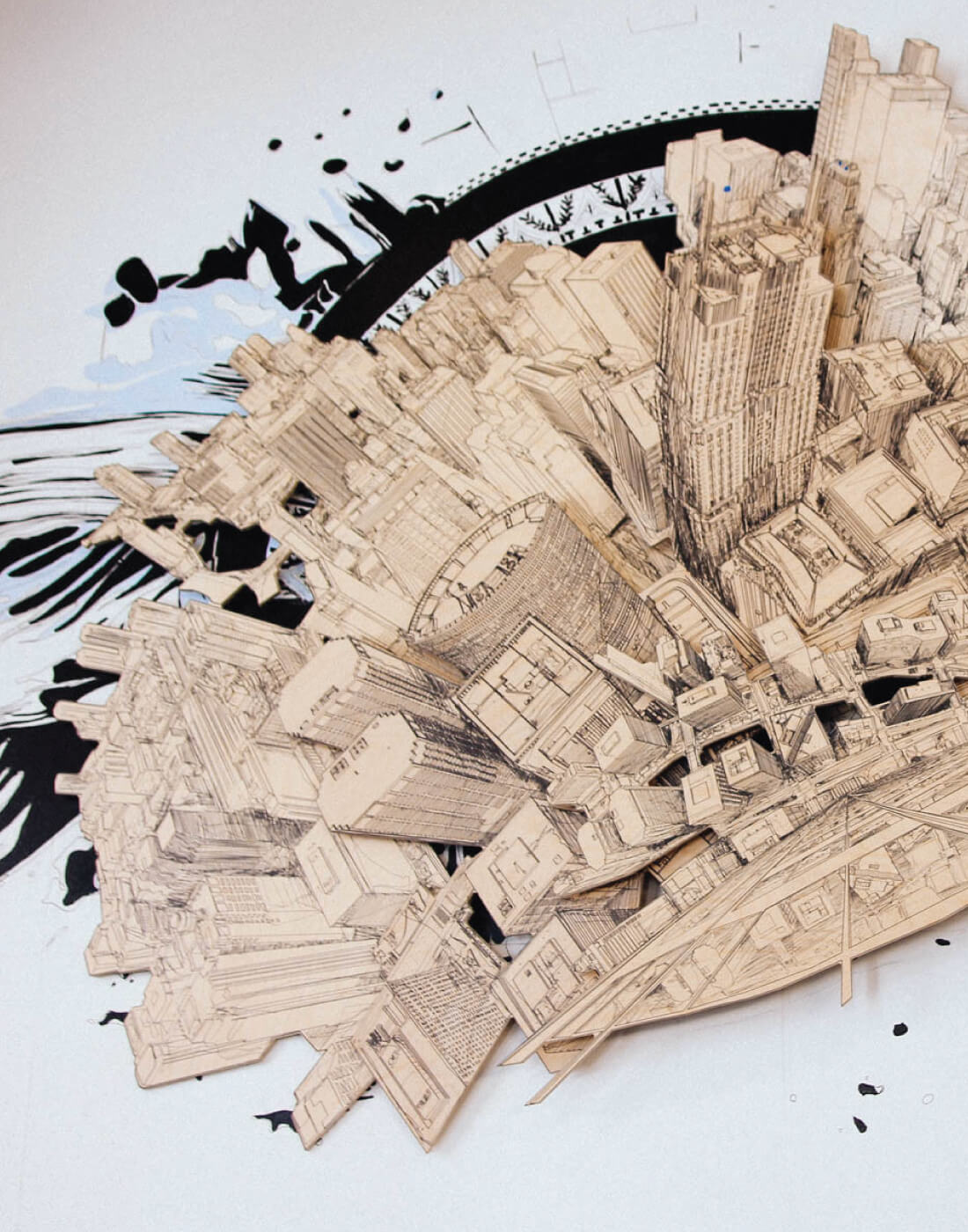Kareemah Batts is a force within the national climbing community and a core leader in the adaptive climbing community. In addition to being the first female paraclimber in a USA Climbing competition, Kareemah observed a large hole in the climbing and adaptive sports community and created the Adaptive Climbing Group. The Adaptive Climbing Group (or ACG for short) began with the first NYC Adaptive Climbing Clinic in 2012 at the original Brooklyn Boulders and now provides affordable, accessible, and sustainable climbing opportunities for people with disabilities. ACG meets twice a week in Brooklyn and once a week at our Somerville location.
On Thursday, May 7th, the Adaptive Climbing Group will host its first event at Brooklyn Boulders Chicago, the Adaptive Climbing Training. The BKB community is invited to participate in this training which will expand participants’ knowledge of climbing for people with disabilities. Later this summer, BKB Chicago will fully welcome the ACG to our facility with a major kickoff featuring notable climbers with disabilities such as Ronnie Dickson. Learn more about the sharp and incisive Kareemah and the ACG and join us for our training by registering here.
How did you first get connected to Brooklyn Boulders?
Around the time of the end of my cancer treatment, my then-boyfriend started climbing at Brooklyn Boulders. I watched him take his classes. I learned how to belay him.
And what year was this?
It’s first year in 2009.
And when did you start getting up on the walls?
I got a scholarship to go to Colorado Mountain School in 2011 after recovering. That got me into climbing in general.
What were your experiences like at the Colorado Mountain School?
It was very emotional and very physical. It was all young adult, cancer survivors and fighters that were part of that scholarship program.
How long were you there?
I was there for a little over a week.
What sort of things did you do there when you were there?
We climbed. We hiked. We had talks around the campfire. There was that one day we went bowling because it snowed.
What sort of things were you hoping to accomplish when you got back?
I didn’t have any set of accomplishments. BKB wasn’t even on my radar. I was just trying to live.
And then when did it get on your radar?
I started going to BKB when I started working at Eastern Mountain Sports. And I was working in their climbing department for about two years.
Can you tell me about the Adaptive Climbing Group and how it got started?
After I started climbing, I tried to convince other amputees from my amputee support group to try it too. Most weren’t and didn’t see how that could happen. I spoke to my podiatrist and he gave me a video of an amputee climber that he found on Youtube or something. I went to a national conference for amputees in Kansas City and he happened to be there. And he was trying to get people to climb too. He had this mobile wall set up during the conference that he was trying to get people to try. I convinced the amputees from New York in my group to try it.
When they came down, they looked like how I felt when I first accomplished sending my first route. And I knew I wanted it to be where I was too because at the time, not only was there not any adaptive climbing program in New York, but I just didn’t see any disabled people climbing, at all. There wasn’t just a community for it and I just never saw it, never heard of it. There were a rare few.
I started speaking to the guy, Ronnie, and I said, “You know what? I would love it if you came to New York. People know who you are. I’m a new amputee but people know about you and your love for climbing. If there was a way to get you to New York, would you help me with a climbing session?” And he said, “Yeah.”
I got a small auxiliary scholarship from NYU Hospital and flew him out here and I set up everything else: getting the vendors involved, inviting these different adaptive sports organizations, getting press. We had about 40 disabled individuals that participated in the very first adaptive session. It was supposed to be one day but we had so many people signed up that we ended up having it for two days.
I got connected with Lance through people who work for Eastern Mountain Sports. I talked to him and asked him if he’d ever had an adaptive climbing clinic at your gym and he was like, “No, but can we have one?”
And I’ve heard this story a lot from other people who say, “Oh! I started to try an adaptive climbing program at my gym that I worked at years ago but they didn’t want to put in the work for it because there’s things like … people are not sure how to work with people with disabilities, they don’t know what to do or they’re afraid of lawsuits or something.” People just normally don’t want to go there. It’s easier to not go there.
But all that’s changed now. Other gyms are following suit. Other programs are following suit or are adding adaptive climbing to already existing programs. It’s really cool.
When they came down, they looked like how I felt when I first accomplished sending my first route. And I knew I wanted it to be where I was too…
What are the ways you’d say the program has changed since you first started it?
When I first started it, I didn’t have an idea to start a program. I just wanted some people to climb with, you know, who would understand how it is to climb. And I had a day off every Thursday. So that’s kind of how that started. My experience was with marketing, publishing and event planning. I knew that if I was going to … since it started to evolve on its own, I knew it was a program and not just this thing that I do.
I started writing and had some ideas and I had some stipulations on what I didn’t want to see. I had participated in a lot of other adaptive sports in the last four or five years. One of the big things I disliked was that it was seasonal or annual. It’d be like, “Come to the adaptive swim clinic,” and that adaptive swim clinic was one day. If we wanted to continue on with the swimming and learning how to swim and getting better at it, that was it. They’d have to wait and come back next year. When I tried to google on the internet for “adaptive climbing,” I didn’t see something that was happening every week or every day. It was like, “Oh, there was this clinic that happened last year, or a couple of months ago.” I said if I’m going to start it, it had to be something that was continuous and sustainable and wasn’t restricted by waiting for next year.
People just normally don’t want to go there. It’s easier to not go there. But all that’s changed now.
And I always get that question a lot when organizations or companies contact. They’ll say, “Oh, when does your season start?” I say, “What season? We’re 365 days of the year.” Every week, twice a week in New York. That doesn’t include private sessions and groups, special events, outdoors trips on ice and rock and competitions. All year long. Every single day. And we’re about creating an atmosphere for adaptive athletes to be recognized and have them be inclusive in the climbing community. Not just get an opportunity to climb but be climbers.
Can you go into what this initial training will be like in Chicago?
We’re partnering with the Rehabilitation Institution of Chicago and their adaptive sports programming to provide sessions for people to actively participate in the sport of climbing. This is a part from what we will launch in summer. But it’s a great start.
So this is a preview?
Yeah, in the best way possible.
Can you go into what that kickoff in summer will look like?
Well so far, we have Avate Apparel and Adidas as co-sponsors of the kickoff event for adaptive climbing in Chicago. Currently there isn’t an adaptive climbing program in Chicago. Most of any adaptive climbing that has been done is out in the suburbs. We tend to draw the urban area, so maybe that’s out thing. We’re into serving large populations who don’t have access.
They’ll say, “Oh, when does your season start?” I say, “What season? We’re 365 days of the year.”
Will there be any changes to what the ACG program is like in Chicago?
There always are some similar foundations to how a program runs, but it’s all about what the community wants. I think the most similar thing is that they’d have access to climbing in the same way that the other programs have access to climb. How frequently they have sessions is totally up to them and the lead volunteers and how often they want to climb and where they want to climb. We always let our communities contribute to what they want to do. We don’t set these totally rigid guidelines to what kind of experience they want to have in climbing.
They can have anything from special guests in pro climbing and the community. So I know our kickoff event will have Ronnie Dickson, the first disabled person to send a V10. He’s a board member of ACG and a good friend of ours and is making Julian’s foot.
And not just that. We offer affordable, not just accessible climbing opportunities because only 30% of people with disabilities in this world work or can work for that matter. And even if they do work, it doesn’t mean they’ll make enough to be able to afford a recreational activity like climbing which is a very expensive sport to get in to. So we provide that support and platform to sponsor climbers to go to competitions. We help them purchase gear for outdoor climbing days. We partner with gyms like BKB to make sure that climbing opportunity is within their budget.
Our regular sessions, you’ll see a wheelchair guy belaying a blind guy climbing next to a girl with cerebral palsy. And you won’t find that anywhere else. But when people walk into BKB every week, that’s what they see all the time.




